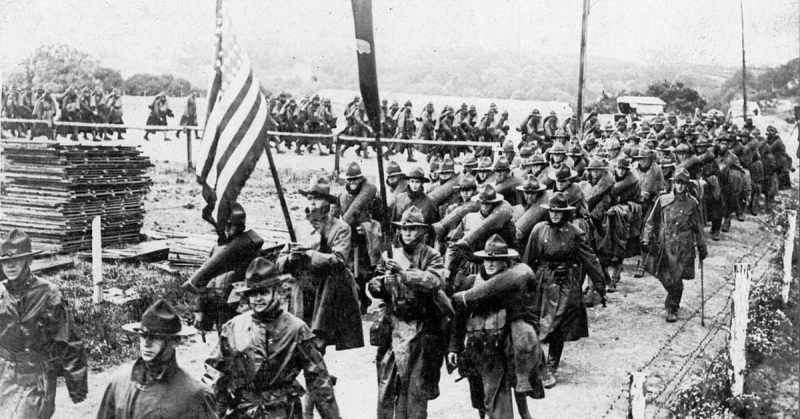Matthew Tinley was born in 1876 in Council Bluffs, IA. He completed his education at Council Bluffs High School in 1894 and very soon after enlisted as a private, assigned to the Third Iowa Infantry Division.
He left medical school and fought in the Spanish-American War while posted in 1898 in the Philippines.
He took up his medical studies again after his service, graduating in 1902 from the University of Nebraska.
Having been elevated to the rank of lieutenant colonel, he served during the Mexican border dispute following his matriculation from medical school.
Tinley was the officer commanding the famous 42nd (Rainbow Division) in France throughout the First World War.
A colonel by then, Tinley was given an Army Distinguished Service Medal by the President for his service during the war as commanding officer of the American Expeditionary Force’s 168th Infantry Regiment, 42nd Division.
As well as six American decorations, he was awarded the Croix de Guerre with the gold star and the French Legion of Honor rosette.
Three years later, he became the 34th Infantry Division’s commanding general.
His military career ended as a three-star lieutenant general, and came out of retirement in 1940 to head the Iowa State Guard.
Tinley, according to the Annals of Iowa, was probably the sole Iowa Army combat officer who was concurrently a practicing doctor. He practiced medicine with his sister, Dr. Mary Tinley, who cared for his patients while he was absent for military service, The Daily Nonpareil reported.
A Democrat, he was backed for nomination as a contender for vice president in 1932 at the national Democratic convention. He withdrew to make way for Texan John Nance Garner.
Tinley earned his first star as a general at the end of hostilities when he was promoted in 1921 to brigadier general.
